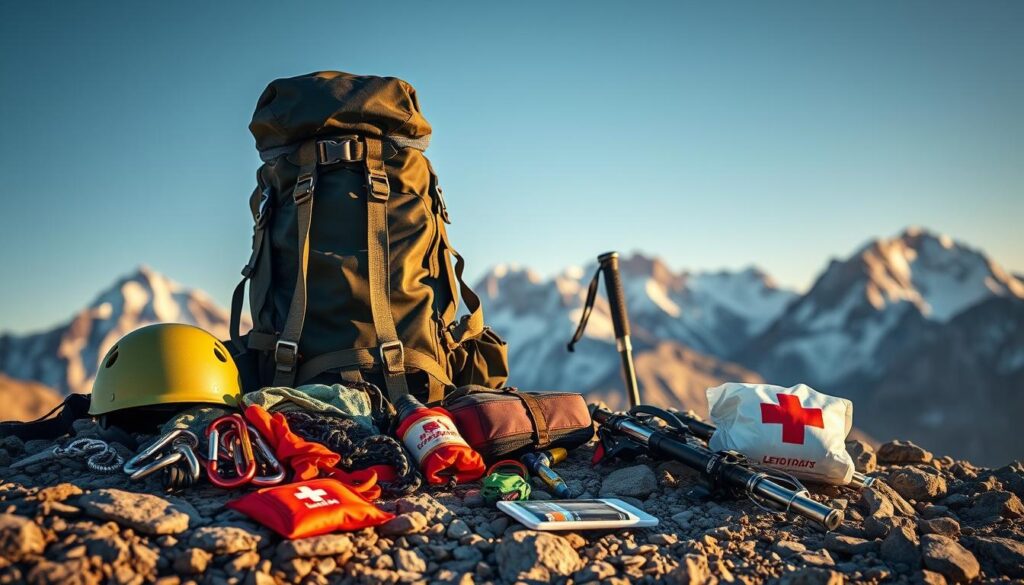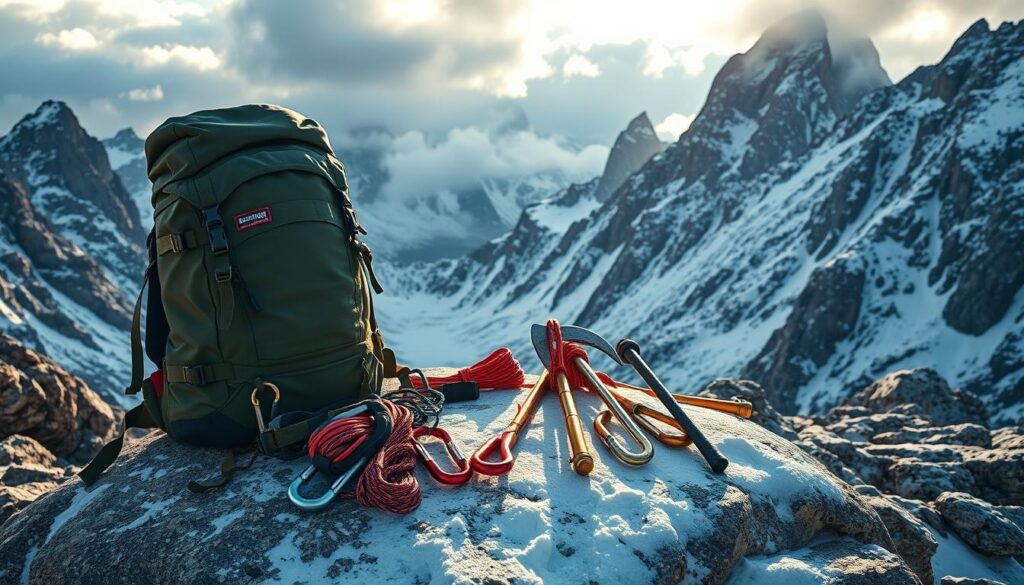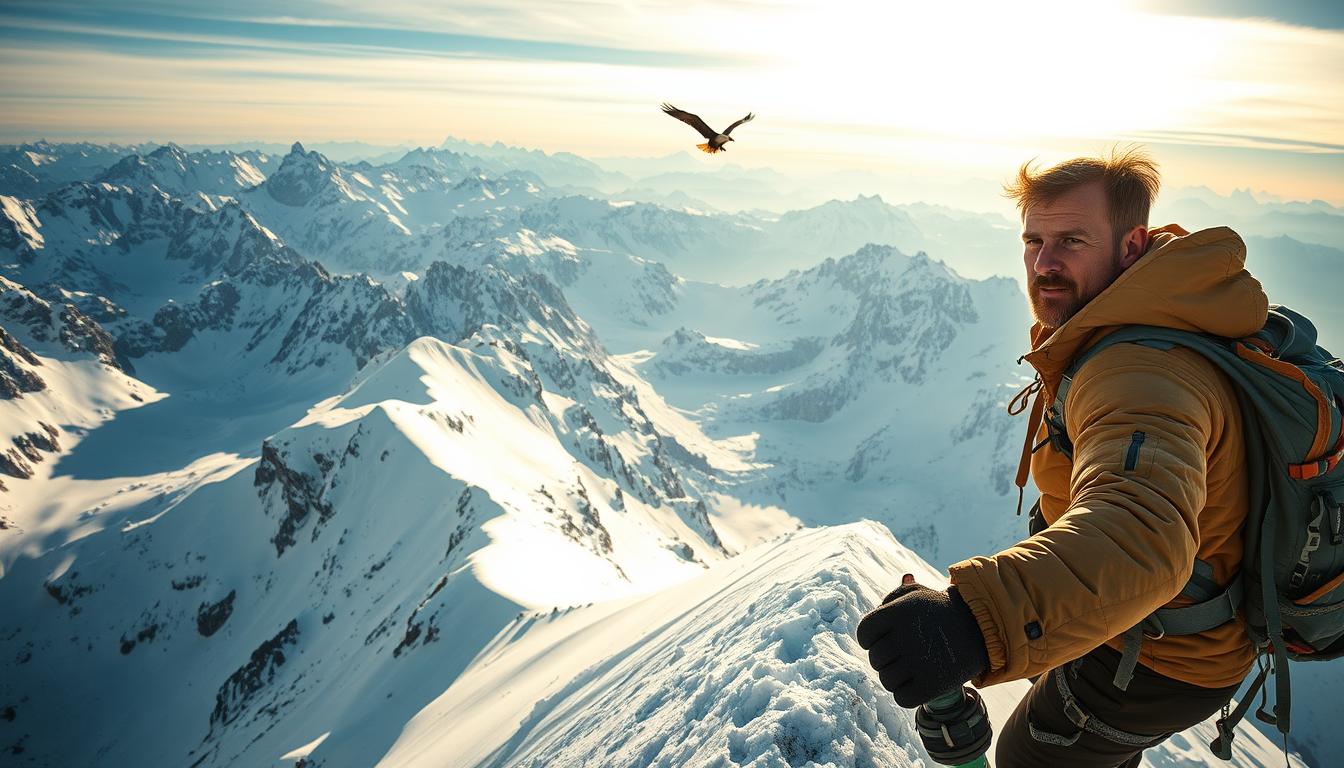Thrilling Mountain Climbing Experiences
Did you know over 25 million people worldwide attempt some form of mountain climbing annually? This outdoor activity isn’t just for experts—it’s a growing passion for adventurers of all skill levels.
Mountaineering blends physical endurance with nature’s grandeur. From rocky cliffs to icy summits, every ascent offers unique challenges. The sport traces its roots to ancient explorations but has evolved into modern disciplines like alpine climbing and ski mountaineering.
Today’s adventurers benefit from advanced gear and safety protocols. These innovations make summiting peaks safer while preserving the raw excitement of the journey. Whether tackling local trails or Himalayan giants, climbers gain a profound connection to wild landscapes.
The appeal goes beyond adrenaline. Many describe it as a transformative experience that builds resilience and teamwork. Sharing stories around campfires or navigating tricky routes creates bonds that last long after the descent.
Key Takeaways
- Mountaineering includes diverse styles like ice climbing and via ferrata
- Modern safety gear has expanded accessibility for beginners
- Peak ascents foster personal growth and environmental awareness
- Group expeditions strengthen teamwork and communication skills
- Historical routes inspire today’s adventure-seeking communities
Getting Started with Mountain Climbing
![]()
Imagine standing atop a peak you once thought unreachable. The journey begins with smart preparation. Focus on two pillars: your physical readiness and selecting terrain that matches your abilities.
Understanding Your Fitness Level
You don’t need marathon-level stamina, but aerobic efficiency is key. Many people push too hard early on. Instead, train at a pace where you can chat comfortably. This builds endurance without burnout.
Assess your cardiovascular health and joint mobility honestly. A mix of hiking, cycling, and stair workouts prepares your body for varied terrain. Start with short sessions and gradually add weight to simulate pack-carrying.
| Training Phase | Focus | Activities | Duration |
|---|---|---|---|
| Base Building | Aerobic Capacity | Walking, Cycling | 4-6 weeks |
| Strength Integration | Muscle Endurance | Stair Climbing, Lunges | 3-4 weeks |
| Skill Development | Technical Practice | Guided Rock Scrambles | Ongoing |
Choosing the Right Climbing Environment
Begin with local trails before tackling alpine routes. Weekend trips to accessible peaks let you test gear and stamina. “The best first summit is one that challenges but doesn’t overwhelm,” notes Colorado guide Lena Torres.
Guided groups help beginners learn route selection and safety protocols. These experiences build confidence while connecting you with mentors. As skills grow, gradually explore more technical terrain.
Mountain Climbing: Expert Tips and Safety Guidelines

What separates successful ascents from dangerous misadventures? Often, it’s preparation. Smart adventurers prioritize safety protocols and environmental stewardship while navigating unpredictable terrain.
Essential Safety Equipment
Your gear list makes or breaks an expedition. Start with helmets and harnesses designed for your specific activity—ice climbing needs differ from rock scrambling. Layered clothing systems combat sudden temperature drops common at elevation.
| Equipment Type | Purpose | Examples |
|---|---|---|
| Protection | Prevent injuries | Helmets, knee pads |
| Navigation | Route tracking | GPS devices, altimeters |
| Emergency | Crisis response | Satellite messengers, bivvy sacks |
Don’t skimp on communication tools. Many rescue scenarios involve teams without working radios or location beacons. Test all devices before departure.
Acclimatization and Weather Awareness
High-altitude adventures demand respect for thin air. Spend 2-3 days at intermediate elevations before pushing higher. “Your body needs time to build red blood cells,” explains Colorado guide Lena Torres.
Afternoon storms pose serious risks. Check forecasts hourly and plan descents before noon when possible. Snowpack can linger until midsummer—carry traction gear even in July.
“Never let summit fever override smart decisions. Turn back if conditions deteriorate.”
Modern safety practices extend beyond gear. Follow Leave No Trace principles and report route changes caused by rockfall. Share trail updates with fellow adventurers to build collective knowledge.
Pre-Climb Training and Physical Fitness

Your success on steep trails begins long before you lace up your boots. Smart preparation blends cardio stamina with functional strength. Let’s break down how to build a body ready for elevation gains.
Cardio and Endurance Building
Start with daily walks—they’re the foundation of mountaineering fitness. Aim for 30-minute sessions during weekdays. Extend to 3+ hour hikes on weekends. Gradually add weight using a 10kg pack to simulate real expeditions.
Consistency beats intensity. “Three moderate workouts weekly build endurance better than one brutal session,” advises Utah guide Mark Reynolds. Mix flat terrain with uphill routes to challenge your lungs.
Strength and Conditioning Routines
Squats and lunges strengthen key muscles for ascents. Add calf raises to handle downhill pressure. This table shows a balanced approach:
| Focus Area | Exercises | Frequency | Progression |
|---|---|---|---|
| Leg Strength | Weighted step-ups | 3x/week | +2kg monthly |
| Core Stability | Plank variations | Daily | +15 sec/week |
| Balance | Single-leg deadlifts | 2x/week | Add uneven surfaces |
Combine these workouts with stair climbing sessions. Your body needs both power and stamina to carry gear safely. Remember—strong hikers make confident climbers.
Essential Gear and Equipment for Alpine Climbing

Your alpine adventure hinges on the gear you trust. Smart equipment choices keep you safe and comfortable across rocky ridges and icy slopes. Let’s explore what belongs in your pack and why.
Proper Footwear and Clothing
Start with boots that fit like a second skin—but with wiggle room. Choose pairs half a size larger than usual to accommodate thick socks and swelling feet. Break them in during training hikes to avoid blisters mid-climb.
Layer smartly for changing conditions. Moisture-wicking base layers pair with insulated mid-layers. Top it off with windproof shells. Technical climbing demands fabrics that move with you while blocking alpine chill.
Technical Tools and Packing Tips
Your equipment list grows with route complexity. This table shows essentials for common scenarios:
| Gear Type | Summer Alpine | Snow/Ice Routes |
|---|---|---|
| Footwear | Lightweight boots | Insulated crampon-compatible |
| Tools | Climbing harness | Ice axes + avalanche probe |
| Safety | Helmet + carabiners | Crevasse rescue kit |
Distribute pack weight wisely. Tighten the waist belt to shift load to your hips—your shoulders will thank you later. “Every ounce counts when you’re gaining elevation,” reminds Utah guide Amy Kessler.
Prioritize accessibility. Keep snacks and navigation tools in outer pockets. Stash emergency gear where you can grab it fast. Test your setup on day hikes before committing to multi-day trips.
Navigating Weather and Mountain Conditions

Peak adventures demand more than physical grit—they require smart weather interpretation. Valley forecasts often mislead, as temperatures drop 3°F for every 1,000 feet gained. Snow lingers on slopes until midsummer, while afternoon storms brew without warning.
Interpreting Forecasts and Seasonal Changes
Morning sunshine doesn’t guarantee safety. High-altitude systems create their own microclimates. Check specialized mountain forecasts 3x daily, focusing on wind speed and lightning risk zones.
Seasonal shifts dramatically alter routes. This table shows what to expect:
| Season | Snow/Ice Coverage | Key Hazards |
|---|---|---|
| Spring | Unstable snowpack | Avalanches |
| Summer | Glacial melt | Rockfall |
| Fall | Early storms | Icy trails |
Climate change reshapes iconic peaks. Everest’s Khumbu Icefall now melts faster, creating unpredictable crevasses. “Routes we’ve used for decades are becoming obsolete,” shares Himalayan guide Rajendra Gurung.
Pack for every scenario—even in July. Layer synthetic fabrics under waterproof shells. Watch for cloud buildup or sudden wind shifts. If thunder rumbles, descend immediately.
“Turn around if your gut says ‘no.’ Mountains aren’t going anywhere.”
Understanding Route Selection and Planning
Charting your path upward requires more than a map—it demands smart strategy. Successful mountaineering begins with targeting specific peaks and routes that align with your experience. Study elevation profiles and recent trip reports to spot potential challenges before stepping onto the trail.
Mapping Your Journey
Topographic maps reveal hidden features like couloirs and ridgelines. Modern apps overlay real-time weather onto classic routes, but always carry a physical backup. Identify key landmarks that guide navigation when fog rolls in or trails fade.
Terrain and Difficulty Considerations
Mixed terrain demands versatile skills—one hour you’re crossing a glacier, the next gripping volcanic rock. Alpine mountaineering often requires transitioning between ice patches and technical climbing sections. Evaluate difficulty ratings, but remember they don’t account for loose scree or sudden storms.
Always plan escape paths and discuss alternatives with your team. The best adventurers adapt when routes shift—because in wild areas, flexibility becomes your greatest tool.
FAQ
How do I know if I’m physically ready for alpine adventures?
What gear is non-negotiable for safety during summit attempts?
How can I prepare for altitude sickness?
What footwear works best for rocky or icy terrain?
How do weather patterns affect route planning?
What’s the best way to train for multi-day expeditions?
How do I choose between glacier travel and rock faces?

Adam Peter is a finance, travel, and automotive writer with over a decade of experience. He creates clear, practical content to help readers manage their money, explore the world with confidence, and make informed decisions about cars and travel gear. His work blends expert insight with real-world usefulness.




